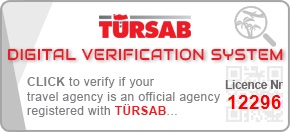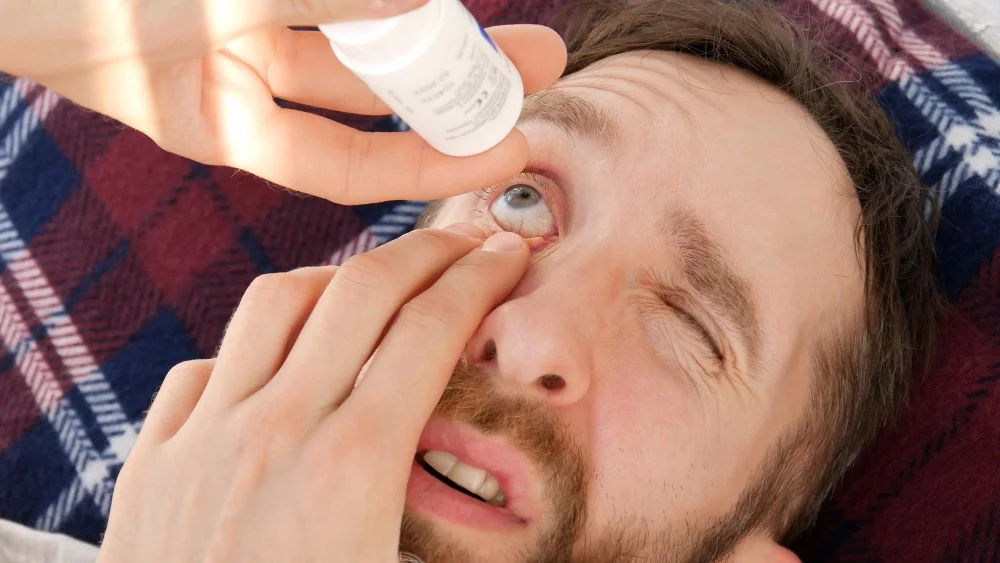LASIK surgery, while effective for vision correction, frequently leads to dry eye treatment after lasik eye surgery symptoms post-operatively, a condition known as PLDES. This can cause discomfort and affect visual outcomes. Proper management is vital for corneal health and long-term comfort. This guide explores the causes, diagnosis, and treatments for post-LASIK dry eye, comparing UK and international care options.
Table of Contents
Understanding Post-LASIK Dry Eye Syndrome
Post-LASIK Dry Eye Syndrome (PLDES) is a common and often transient side effect of refractive surgery. It occurs due to several interconnected factors that temporarily disrupt the delicate balance of the ocular surface. Understanding these mechanisms is fundamental to effective management.
Etiology and Risk Factors
The primary cause of PLDES is the severing of corneal nerves during the creation of the corneal flap, which is integral to the LASIK procedure. These nerves play a vital role in stimulating tear production. Their disruption leads to reduced corneal sensitivity, diminishing the blink reflex and decreasing the signaling to the lacrimal glands to produce adequate tears. Additionally, the altered corneal shape can affect tear film stability and distribution. Inflammation associated with the healing process can also contribute to dry eye symptoms.
Several factors can increase a patient’s risk of developing or experiencing more severe PLDES:
- Pre-existing Dry Eye Disease: Individuals with undiagnosed or subclinical dry eye prior to LASIK are at a significantly higher risk. Pre-operative screening is critical to identify and manage these cases.
- High Myopia: Patients with higher degrees of nearsightedness often require deeper tissue ablation, potentially affecting more corneal nerves.
- Older Age: Tear production naturally decreases with age, making older patients more susceptible.
- Female Gender: Hormonal fluctuations can influence tear film stability, making women generally more prone to dry eye.
- Certain Medications: Antihistamines, decongestants, and some antidepressants can exacerbate dry eye.
- Environmental Factors: Exposure to dry, windy climates, air conditioning, or prolonged screen time can worsen symptoms.
Symptoms and Diagnosis
The symptoms of PLDES are similar to those of general dry eye disease but typically emerge or intensify shortly after LASIK surgery. These can include:
- A persistent sensation of dryness, grittiness, or a foreign body in the eye.
- Burning or stinging.
- Redness and irritation.
- Blurred or fluctuating vision, especially after prolonged visual tasks.
- Light sensitivity (photophobia).
- Excessive tearing (epiphora), which is often a paradoxical reflex response to severe dryness.
Diagnosis involves a comprehensive eye examination. Key diagnostic tests include:
- Ocular Surface Disease Index (OSDI) Questionnaire: A subjective assessment of symptom severity and impact on quality of life.
- Schirmer’s Test: Measures basal and reflex tear production.
- Tear Break-Up Time (TBUT): Evaluates tear film stability by measuring the time it takes for the tear film to break down after a blink.
- Corneal and Conjunctival Staining: Using fluorescein or lissamine green dyes to identify areas of damage on the ocular surface.
- Meibography: Imaging of the meibomian glands to assess their structure and function, as meibomian gland dysfunction (MGD) is a common co-factor.
The Imperative of Dry Eye Treatment After LASIK Eye Surgery
Effective dry eye treatment after LASIK eye surgery is not merely a matter of comfort but a critical component of post-operative care. Neglecting or inadequately treating PLDES can lead to significant complications and compromise the long-term success of the refractive procedure. The imperative for rigorous management stems from its direct impact on visual acuity, patient comfort, and the prevention of more severe ocular conditions.
Preserving Visual Acuity
The tear film is the first refractive surface of the eye. A compromised or unstable tear film, characteristic of dry eye, can lead to significant fluctuations in vision. Patients may experience intermittent blurring, ghosting, or difficulty with night vision. These visual disturbances can be frustrating and diminish the perceived benefits of LASIK. Proper dry eye treatment ensures a smooth, stable tear film, which is essential for optimal light refraction and consistently sharp vision. Maintaining a healthy tear film directly translates to superior visual outcomes and sustained satisfaction with the LASIK procedure.
Enhancing Patient Comfort
Chronic ocular discomfort significantly impacts a patient’s quality of life. Symptoms such as burning, stinging, foreign body sensation, and persistent irritation can make daily activities challenging, from reading and working on computers to driving and enjoying leisure time. Effective dry eye management alleviates these symptoms, restoring comfort and allowing patients to fully appreciate their improved vision without the hindrance of constant irritation. A comprehensive approach to dry eye treatment after LASIK eye surgery is paramount for enhancing the overall post-operative experience.
Preventing Long-Term Complications
Beyond immediate discomfort and visual fluctuations, untreated or poorly managed dry eye can lead to serious long-term complications. Chronic dryness can cause epithelial damage, leading to corneal abrasions, erosions, and even ulceration in severe cases. These conditions not only cause intense pain but also increase the risk of infection and permanent scarring, which could irreversibly impair vision. Furthermore, severe dry eye can delay corneal nerve regeneration and overall healing. A systematic review and meta-analysis published in *Ophthalmology* in 2020 by Kim et al. highlighted that post-LASIK dry eye symptoms can persist for months and even years in a significant percentage of patients, underscoring the importance of early and sustained intervention, particularly for those with pre-existing dry eye. Thus, proactive and sustained dry eye treatment after LASIK eye surgery is a protective measure against these potentially debilitating sequelae.
Comprehensive Treatment Approaches
Managing dry eye after LASIK requires a multi-faceted approach, often involving a combination of therapies tailored to the individual’s specific symptoms and severity. The goal is to restore tear film stability, reduce inflammation, and promote corneal healing.
Conservative Management
These are often the first line of defense and can provide significant relief for mild to moderate symptoms.
- Artificial Tears and Lubricants: These are the cornerstone of initial dry eye management. They supplement the natural tear film, providing lubrication and moisture. Preservative-free formulations are preferred, especially for frequent use, to avoid irritation and toxicity. Different viscosities are available, from thin drops for daytime use to thicker gels or ointments for nighttime application.
- Warm Compresses and Eyelid Hygiene: Essential for addressing meibomian gland dysfunction (MGD), which often co-exists with dry eye. Warm compresses help melt solidified oils in the meibomian glands, while gentle eyelid massage and cleansing remove debris and improve gland function.
- Environmental Modifications: Simple changes can make a big difference. Avoiding direct exposure to air conditioning, fans, and dry, windy environments is advisable. Using humidifiers in homes or offices, taking frequent breaks during screen time, and ensuring adequate hydration are also beneficial.
Advanced Pharmacological Interventions
When conservative measures are insufficient, ophthalmologists may prescribe medications to address underlying inflammation or promote tear production.
- Anti-inflammatory Drops:
- Cyclosporine Emulsion (Restasis, Ikervis): This calcineurin inhibitor works by suppressing immune responses that contribute to chronic dry eye. It helps increase natural tear production over time but requires consistent use for several weeks to show full effect.
- Lifitegrast Ophthalmic Solution (Xiidra): A lymphocyte function-associated antigen-1 (LFA-1) antagonist that blocks the interaction between LFA-1 and ICAM-1, reducing inflammation on the ocular surface. Like cyclosporine, it requires sustained use.
- Topical Steroids: Short courses of low-dose topical corticosteroids can rapidly reduce inflammation during acute flare-ups. However, prolonged use is typically avoided due to potential side effects like elevated intraocular pressure and cataract formation.
- Autologous Serum Eye Drops (ASEDs): Derived from the patient’s own blood serum, these drops contain essential growth factors, vitamins, and immunoglobulins that mimic natural tears and promote corneal healing. They are typically reserved for severe, refractory cases.
Procedural Treatments
For persistent or severe symptoms that do not respond to drops, various in-office procedures can be considered.
- Punctal Plugs: Tiny, biocompatible devices inserted into the puncta (the small openings that drain tears from the eye) to block tear drainage and keep tears on the ocular surface for longer. They can be temporary (collagen) or permanent (silicone). This helps to augment the efficacy of dry eye treatment after LASIK eye surgery by conserving natural and artificial tears.
- Meibomian Gland Expression and IPL (Intense Pulsed Light): Targeted treatments for MGD. Manual expression helps clear blocked glands, while IPL therapy uses specific wavelengths of light to reduce inflammation, destroy abnormal blood vessels, and stimulate meibomian gland function. Multiple sessions are usually required.
- Amniotic Membrane Therapy: In cases of severe corneal damage or persistent epithelial defects, an amniotic membrane can be placed on the ocular surface to promote healing and reduce inflammation. This biological dressing offers significant regenerative properties.
- Neurostimulation: Emerging therapies like TrueTear or iTEAR100 use nasal neurostimulation to activate the natural tear production pathways, offering a drug-free option for increasing basal tear secretion.
Navigating Treatment Options: Turkey vs. United Kingdom
Patients seeking advanced care for dry eye symptoms, especially those considering or having undergone laser eye surgery, often weigh their options between local providers and international medical destinations. Turkey has emerged as a prominent hub for eye treatments, offering compelling advantages particularly for procedures like laser eye surgery prices in Turkey and comprehensive aftercare. Comparing the healthcare landscape in Turkey with that of the United Kingdom reveals distinct differences in cost, accessibility, and the scope of available treatments.
Quality and Expertise
Both Turkey and the United Kingdom boast highly skilled ophthalmologists and advanced medical facilities. In the UK, patients benefit from stringent regulatory bodies and a well-established healthcare system (NHS and private). Turkish clinics, particularly those catering to international patients, are often accredited by international organizations and employ Western-trained specialists. Many Turkish eye clinics invest heavily in state-of-the-art diagnostic and treatment technologies, ensuring that the quality of care for conditions such as severe post-LASIK dry eye is on par with, or in some instances, exceeds that found in the UK. Patients can research Eye Treatments in Turkey to evaluate credentials and patient testimonials, ensuring peace of mind regarding the expertise available.
Cost-Effectiveness
One of the most significant factors driving patients to seek medical care abroad is cost. Medical treatments, including those for dry eye, can be considerably more affordable in Turkey compared to the UK, even when accounting for travel and accommodation. This affordability does not typically come at the expense of quality, but rather reflects differing economic structures and operational costs. For example, a course of specialized drops, punctal plugs, or multiple IPL sessions for dry eye treatment after LASIK eye surgery could represent substantial savings.
| Service/Item | Turkey Price (USD) | United Kingdom Price (GBP) |
|---|---|---|
| Initial Dry Eye Consultation | $150 – $250 | £150 – £300 |
| Punctal Plugs (per eye) | $300 – $500 | £400 – £700 |
| IPL Therapy (3 sessions) | $900 – $1,500 | £1,200 – £2,000 |
| Cyclosporine Eye Drops (1 month) | $70 – $150 | £80 – £180 |
| Autologous Serum Eye Drops (custom) | $400 – $800 | £600 – £1,200 |
*Please note: These prices are estimates and can vary significantly based on the clinic, specific treatments, and individual patient needs.*
Accessibility and Travel
Turkey offers excellent accessibility for international patients, with numerous direct flights from major UK cities. The medical tourism sector in Turkey is highly developed, providing comprehensive support services including airport transfers, accommodation arrangements, and language assistance, making the entire process seamless for patients. Waiting times for specialized treatments can also be considerably shorter in Turkey compared to the often-extended waiting lists within the NHS in the UK, making it an attractive option for timely intervention in complex cases of dry eye.Cataract Surgery in Turkey also benefits from these factors, illustrating the broad appeal of Turkish eye care.
| Factor | UK Private Clinic | Turkey Private Clinic |
|---|---|---|
| Appointment Wait Times | Moderate to Long | Short to Very Short |
| Cost-Effectiveness | Lower | Significantly Higher |
| Travel Requirement | Minimal (local) | International Travel |
| Language Barrier | None | Often requires translator (provided) |
| Patient Support Services | Standard | Comprehensive (travel, accommodation) |
CK Health Turkey: Your Partner for Ocular Health
At CK Health Turkey, we understand the critical importance of comprehensive and compassionate care, especially for international patients navigating complex medical decisions. As a leading facilitator for medical treatments in Turkey, we specialize in connecting patients with top-tier ophthalmological clinics renowned for their expertise in Eye Treatments in Turkey, including advanced dry eye management. Our network includes surgeons and clinics equipped with the latest technology and protocols for dry eye treatment after LASIK eye surgery, ensuring meticulous attention to detail and patient-centric care. We pride ourselves on offering a seamless experience, from initial consultation and treatment planning to post-operative support and follow-up. Our dedicated team assists with every aspect of your medical journey, providing transparent pricing, travel arrangements, and personalized care coordination. We are committed to delivering not just medical treatment, but a holistic wellness experience that prioritizes your comfort and optimal outcomes.
Do not let persistent dry eye symptoms diminish the benefits of your LASIK procedure. Take the proactive step towards enduring ocular comfort and clear vision. Get in touch with CK Health Turkey today for a personalized consultation, or visit our website to learn more about how we can support your journey to optimal eye health.
The persistent challenge of dry eye syndrome following LASIK surgery necessitates a thorough and adaptive treatment paradigm. From basic lubricating drops to advanced anti-inflammatory medications and procedural interventions, a spectrum of options exists to restore ocular comfort and preserve visual integrity. Patients must recognize the critical role of early diagnosis and consistent adherence to prescribed therapies to mitigate potential long-term complications and ensure the sustained success of their refractive procedure. When considering your options, the convergence of high-quality care, advanced technology, and competitive pricing makes destinations like Turkey a compelling choice for effective dry eye treatment after LASIK eye surgery. Ultimately, the goal is to achieve not just corrected vision, but also enduring ocular health and comfort, allowing individuals to fully embrace the transformative benefits of their LASIK experience.
FAQs
How common is dry eye after LASIK surgery?
Dry eye symptoms are quite common after LASIK, affecting a significant percentage of patients, with estimates varying from 20% to over 50% in the immediate post-operative period. For most, symptoms are temporary and resolve within 3-6 months.
How long does post-LASIK dry eye typically last?
While many patients experience relief within a few weeks to months, some may have persistent dry eye symptoms for six months to a year, or even longer in rare cases. Long-term management might be necessary for a small subset of individuals.
Can dry eye after LASIK affect my vision?
Yes, a compromised tear film due to dry eye can cause fluctuating vision, blurriness, or ghosting. Maintaining a stable tear film is crucial for optimal visual acuity and consistent clarity.
What are the most effective initial treatments for post-LASIK dry eye?
Initial treatments typically involve frequent use of preservative-free artificial tears. Warm compresses, eyelid hygiene, and environmental modifications (like using humidifiers) are also highly recommended to improve comfort and tear film stability.
When should I consider advanced treatments like punctal plugs or IPL?
Advanced treatments are usually considered if conservative measures and anti-inflammatory eye drops (like cyclosporine or lifitegrast) do not provide adequate relief after several weeks or months. Your ophthalmologist will recommend the most suitable option based on the severity and underlying cause of your dry eye.
Is it safe to use over-the-counter eye drops for post-LASIK dry eye?
Yes, preservative-free artificial tears are generally safe and recommended. However, it is essential to consult your ophthalmologist before using any other over-the-counter eye drops, especially those marketed for redness relief, as they can sometimes exacerbate dry eye symptoms with prolonged use.
Can pre-existing dry eye worsen after LASIK?
Yes, individuals with pre-existing dry eye are at a higher risk of experiencing more severe or prolonged dry eye symptoms after LASIK. Comprehensive pre-operative screening and management are crucial to mitigate this risk.
What role does inflammation play in post-LASIK dry eye?
Inflammation on the ocular surface and within the lacrimal glands is a significant component of chronic dry eye, including post-LASIK dry eye. Anti-inflammatory eye drops are often prescribed to break this inflammatory cycle and improve tear production and comfort.
Can lifestyle changes help manage post-LASIK dry eye?
Absolutely. Reducing screen time, taking regular breaks, ensuring adequate hydration, using humidifiers, avoiding direct fan or air conditioning, and wearing protective eyewear in windy conditions can all significantly help manage symptoms.
How does the cost of dry eye treatment in Turkey compare to the UK?
Typically, the cost of advanced dry eye treatments and ongoing care in Turkey is considerably more affordable than in the UK, making it an attractive option for international patients seeking high-quality care at a lower price point, without compromising on expertise or technology.



